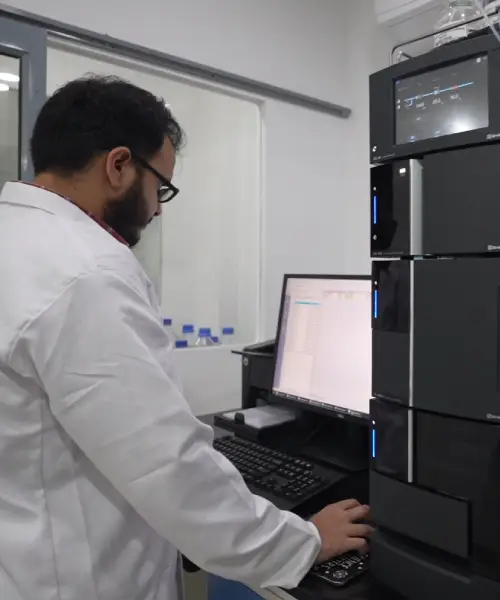
API Pharma
Pharmaceutical manufacturing is a multifaceted process that transforms raw materials into life-saving medicines. Central to this process are three key components: Active Pharmaceutical Ingredients (APIs), pharma intermediates, and finished dosage forms. Each plays a specific and indispensable role in the lifecycle of a pharmaceutical drug.
Understanding how these components interact within the broader drug development process is crucial for professionals across research, production, regulatory, and commercial functions. This guide aims to demystify these foundational elements and offer insights into their interdependencies.
What Are APIs and Why They Matter
Active Pharmaceutical Ingredients (APIs) are the biologically active elements in medications that produce the intended therapeutic effect. Whether it's lowering blood pressure or fighting infection, it's the API that performs the action within the patient's body.
APIs can be synthesized chemically or biologically. Chemical synthesis involves a series of controlled reactions, while biologics are made from living cells or organisms. Regardless of origin, APIs must be manufactured under strict quality controls and cGMP (current Good Manufacturing Practices) standards.
The API drug substance refers to the purified, active component before it's formulated into a finished product. Regulatory agencies such as the FDA, EMA, and PMDA impose detailed guidelines for manufacturing, testing, and documenting this substance to ensure its safety, efficacy, and consistency.
Moreover, pharmaceutical APIs can be classified based on potency, with some—like oncology drugs—requiring high-containment facilities and specialized handling procedures.
Understanding Pharma Intermediates
Pharma intermediates are substances formed during the synthesis of an API. Though not therapeutically active themselves, they are vital links in the chain of chemical reactions that produce a final active compound.
For example, during the api manufacturing process, multiple intermediates might be synthesized and purified before reaching the final API structure. These can be generic or customized, depending on the drug’s complexity.
The quality and purity of intermediates directly impact the yield and safety profile of the final product. As such, selecting reliable partners for sourcing or manufacturing intermediates is essential. Some advanced pharma intermediates—like those for antivirals or CNS drugs—require intricate synthesis techniques and tight regulatory oversight.
Intermediates also play a role in protecting intellectual property. Custom-designed intermediates can help pharmaceutical companies maintain unique synthetic pathways, preserving exclusivity and innovation.
From API to Finished Dosage Form
The journey from raw API to a finished dosage form—like a tablet, capsule, injectable, or cream—is a highly regulated and scientifically complex process.
What Are Finished Dosage Forms?
A finished dosage form (FDF) is the final formulation that patients consume or apply. It includes both the API and various excipients (inactive ingredients), which aid in stability, bioavailability, and manufacturability.
Common types of FDFs include:
- Oral solids (tablets, capsules)
- Injectables
- Topicals (creams, ointments)
- Inhalers and nasal sprays
- Transdermal patches
Formulation: Where Science Meets Engineering
Formulating an API into an FDF involves blending, granulation, drying, compression (for tablets), filling (for capsules), and often coating for stability or controlled release. Each step must maintain the integrity and performance of the pharmaceutical API.
Facilities performing this transformation must meet stringent cGMP standards and often partner with a reliable cdmo pharma company to manage scale-up, regulatory submissions, and packaging for distribution.
API Manufacturing Process: Step-by-Step
The api manufacturing process comprises several critical stages. Each step is designed to ensure product consistency, cost efficiency, and regulatory compliance.
Step 1: Route Design and Feasibility
This involves selecting the most practical and cost-effective synthetic pathway to produce the API, often based on literature research, proprietary chemistry, or green chemistry principles.
Step 2: Process Development
Process chemists optimize reaction conditions, raw material usage, and waste management. This stage is also where risks such as by-product formation and yield loss are mitigated.
Step 3: Pilot-Scale Synthesis
A small-scale version of the final process is executed to validate the chemistry and ensure reproducibility. This pilot batch is used for initial regulatory filings and clinical studies.
Step 4: Scale-Up and Technology Transfer
The validated pilot process is scaled to commercial levels. This involves robust documentation, equipment selection, and parameter standardization to ensure a seamless transition.
Step 5: Final Validation and Compliance
Manufacturers must ensure batch-to-batch consistency. Data collected during this stage forms part of the api process development stages documentation submitted to regulatory agencies.
Incorporating real-time analytical monitoring and process automation improves efficiency and minimizes human error, further aligning the process with global cGMP standards.
How CDMOs Support the Drug Development Process
Contract Development and Manufacturing Organizations (CDMOs) have emerged as crucial partners in modern pharmaceutical innovation. Their services span the entire drug development process, offering technical, operational, and regulatory support to pharma companies.
Key Areas Where CDMOs Add Value:
- Process Development & Optimization: CDMOs help refine synthetic routes for APIs and intermediates to improve yield and scalability.
- Custom Synthesis: For drugs with complex pathways, CDMOs provide tailored synthesis solutions, often under IP-sensitive conditions.
- Analytical Services: Robust testing and validation are critical for regulatory approval. CDMOs often offer full analytical services in-house.
- Clinical Supply: Manufacturing of clinical trial materials, including placebo and active arms, under strict compliance.
- Commercial Manufacturing: Large-scale commercial production of APIs and FDFs, with capabilities for rapid scale-up.
- Regulatory Support: Assistance in compiling DMFs (Drug Master Files), CTDs, and other documentation for global markets.
By integrating these services, CDMOs act as an extension of the pharma company’s in-house capabilities, reducing time-to-market and investment risks.
Conclusion
A comprehensive understanding of APIs, pharma intermediates, and finished dosage forms is essential for navigating the complex landscape of pharmaceutical manufacturing. Each element is a critical building block in the journey from lab bench to pharmacy shelf.
As regulatory scrutiny tightens and therapeutic targets become more complex, choosing the right partners, especially for the api manufacturing process and formulation scale-up, becomes a strategic imperative. Leveraging the infrastructure, expertise, and flexibility of experienced CDMOs ensures efficient, compliant, and high-quality delivery of pharmaceutical drugs to patients worldwide.






